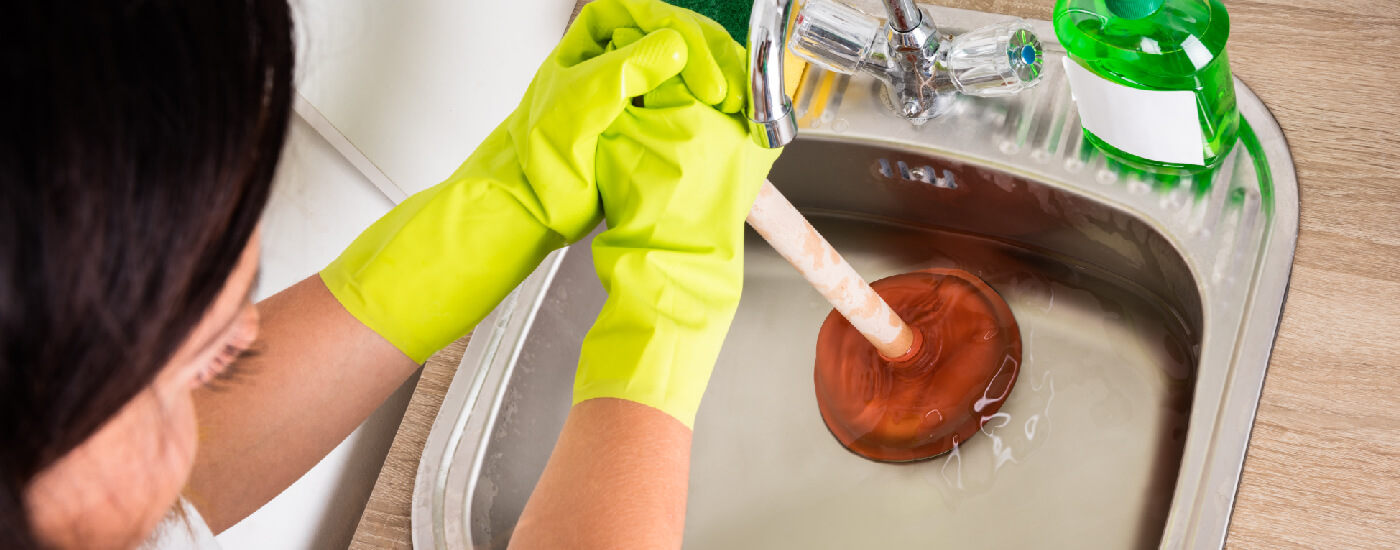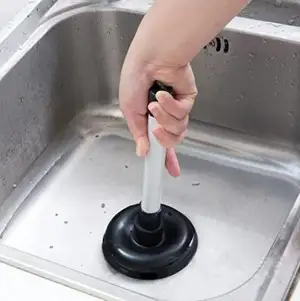Almost everyone has got their private opinion on the subject of Tips on How to Effectively Use a Plunger.

Introduction
Proper maintenance of household drains is important for preventing clogs and making sure smooth water circulation. One of the trick devices in every house owner's toolkit is the bettor, alongside various drainpipe cleansers created to deal with persistent clogs properly. This short article discovers just how to use bettors and drain cleaners efficiently to maintain your drains moving freely.
Area 1: Recognizing Bettors
Types of Plungers
There are several types of plungers available, each made for different kinds of drains pipes and clogs. One of the most typical types consist of cup plungers, flange bettors, and accordion bettors.
Exactly How Plungers Work
Bettors deal with the principle of producing stress and suction to remove obstructions. When properly applied over a drain, they produce a vacuum cleaner that can pull out particles or separate blockages.
Choosing the Right Bettor
Selecting the appropriate bettor relies on the kind of drain and the nature of the clog. Cup plungers are excellent for sinks and tubs, while flange plungers are better suited for toilets as a result of their style.
Usual Mistakes with Plungers
Avoiding these blunders guarantees effective plunging: incorrect seal around the drainpipe, not enough pressure, and unclear surrounding particles.
Section 2: Making Use Of Plungers Successfully
Preparation
Before plunging, ensure the bettor covers the drainpipe entirely and forms a tight seal. Clear any kind of visible debris around the drainpipe opening.
Strategy
Begin with gentle plunging motions to develop suction. Rise stress slowly, using a consistent rhythm. Repeat as required up until the drainpipe clears.
Repairing Tips
If plunging does not function, try adjusting the seal, applying oil jelly for a better seal, or utilizing a various type of bettor.
Section 3: Recognizing Drainpipe Cleaners
Kinds Of Drainpipe Cleaning Company
Drain pipes cleaners can be chemical or enzymatic. Chemical cleaners use strong chemicals to dissolve clogs, while enzymatic cleansers utilize natural enzymes to break down raw material.
How Drainpipe Cleaners Work
Chemical cleansers react with obstructions to liquify them, while chemical cleaners break down organic materials like hair and oil without harming pipelines.
Safety Considerations
Constantly wear gloves and eye protection when making use of chemical drainpipe cleansers. Make sure ample ventilation and comply with maker directions carefully.
Eco-Friendly Alternatives
Think about making use of vinegar and cooking soft drink or enzyme-based cleansers for green alternatives that are much safer for pipelines and the environment.
Section 4: Utilizing Drain Cleansers Effectively
Application Methods
Pour chemical cleaners directly right into the drainpipe opening. Enable them to work for the recommended time before purging with hot water. Chemical cleansers must rest over night.
Precautions
Prevent blending different types of cleaners, as this can create harmful fumes. Never utilize chemical cleansers combined with a bettor, as spilling can take place.
Taking Care Of Stubborn Obstructions
For consistent obstructions, consider utilizing a plumbing serpent or calling a professional plumbing to stop damage to pipes.
Verdict
To conclude, understanding just how to utilize bettors and drainpipe cleansers effectively is crucial for maintaining healthy and balanced plumbing systems. By picking the right devices and methods, home owners can tackle minor blockages and stop major pipes concerns down the line.
How to Use a Plunger to Unclog a Drain
The humble plunger is a simple yet effective tool for breaking clogs in sinks, tubs and toilets. This handy tool is easy to use. You can make the most of its power if you understand how it works. Ready to dive in? Here’s what you need to know.
Safety First!
Never use a plunger with drain chemicals. Water will splash as you work, and the chemicals can spatter, burning skin and eyes. It’s a good idea to use rubber gloves and wear safety goggles when you work on a clog.
Choose the Right Tool for the Job
Plungers come in two different styles. Sinks, bathtubs and showers require a cup plunger. Like its name suggests, the rubber end is shaped like a cup. Use a flange plunger on toilets. These plungers have a rubber funnel extending from the cup. A plunger needs to be big enough to cover the drain.
Ready, Set, Plunge!
Coat the rim: Coat the plunger rim with petroleum jelly. This helps make a better seal.
Block outlets: Hold a wet rag over nearby outlets such as the overflow vent or the drain in a second sink.
Release air: Insert the plunger at an angle into the water. Water will displace air in the cup. A water-filled cup is more forceful than one filled with air.
Keep the plunger upright: Hold the plunger perpendicular to the drain. Use fast, forceful strokes, but make the first stroke gentle. The first stroke can create a splash if the cup still contains air. Thrust the plunger 15 to 20 times.
Snap off the plunger: The final stroke should be a strong upward motion that ends when the plunger snaps off the drain.
Repeat the process: you may need to repeat this sequence several times. When the water drains away, your work is done. High-five! https://plumbernw.com/blog/how-to-use-a-plunger-to-unclog-a-drain/

Application Methods
Pour chemical cleaners directly right into the drainpipe opening. Enable them to work for the recommended time before purging with hot water. Chemical cleansers must rest over night.
Precautions
Prevent blending different types of cleaners, as this can create harmful fumes. Never utilize chemical cleansers combined with a bettor, as spilling can take place.
Taking Care Of Stubborn Obstructions
For consistent obstructions, consider utilizing a plumbing serpent or calling a professional plumbing to stop damage to pipes.
Verdict
To conclude, understanding just how to utilize bettors and drainpipe cleansers effectively is crucial for maintaining healthy and balanced plumbing systems. By picking the right devices and methods, home owners can tackle minor blockages and stop major pipes concerns down the line.
How to Use a Plunger to Unclog a Drain
The humble plunger is a simple yet effective tool for breaking clogs in sinks, tubs and toilets. This handy tool is easy to use. You can make the most of its power if you understand how it works. Ready to dive in? Here’s what you need to know.
Safety First!
Never use a plunger with drain chemicals. Water will splash as you work, and the chemicals can spatter, burning skin and eyes. It’s a good idea to use rubber gloves and wear safety goggles when you work on a clog.
Choose the Right Tool for the Job
Plungers come in two different styles. Sinks, bathtubs and showers require a cup plunger. Like its name suggests, the rubber end is shaped like a cup. Use a flange plunger on toilets. These plungers have a rubber funnel extending from the cup. A plunger needs to be big enough to cover the drain.
Ready, Set, Plunge!
Coat the rim: Coat the plunger rim with petroleum jelly. This helps make a better seal. Block outlets: Hold a wet rag over nearby outlets such as the overflow vent or the drain in a second sink. Release air: Insert the plunger at an angle into the water. Water will displace air in the cup. A water-filled cup is more forceful than one filled with air. Keep the plunger upright: Hold the plunger perpendicular to the drain. Use fast, forceful strokes, but make the first stroke gentle. The first stroke can create a splash if the cup still contains air. Thrust the plunger 15 to 20 times. Snap off the plunger: The final stroke should be a strong upward motion that ends when the plunger snaps off the drain. Repeat the process: you may need to repeat this sequence several times. When the water drains away, your work is done. High-five! https://plumbernw.com/blog/how-to-use-a-plunger-to-unclog-a-drain/

I hope you enjoyed our article on Tips on How to Effectively Use a Plunger. Thanks a ton for taking time to read through our blog. You should take a moment to distribute this blog if you enjoyed reading it. Thank you for your time invested reading it.
See Availability